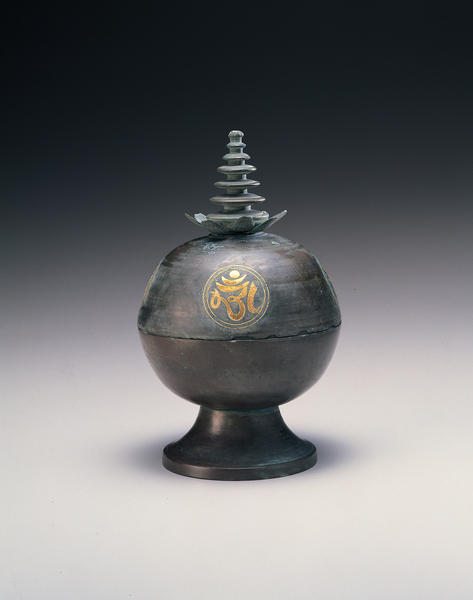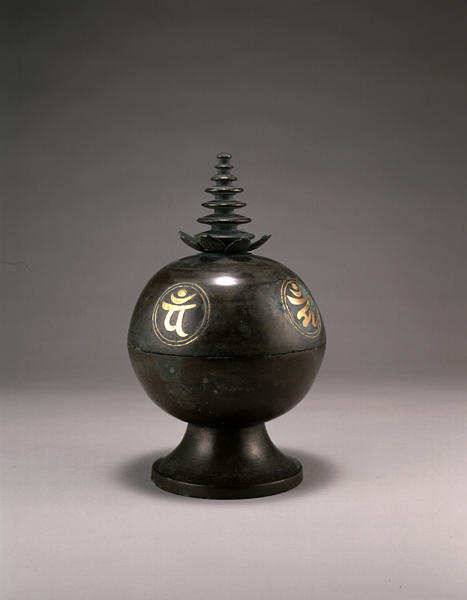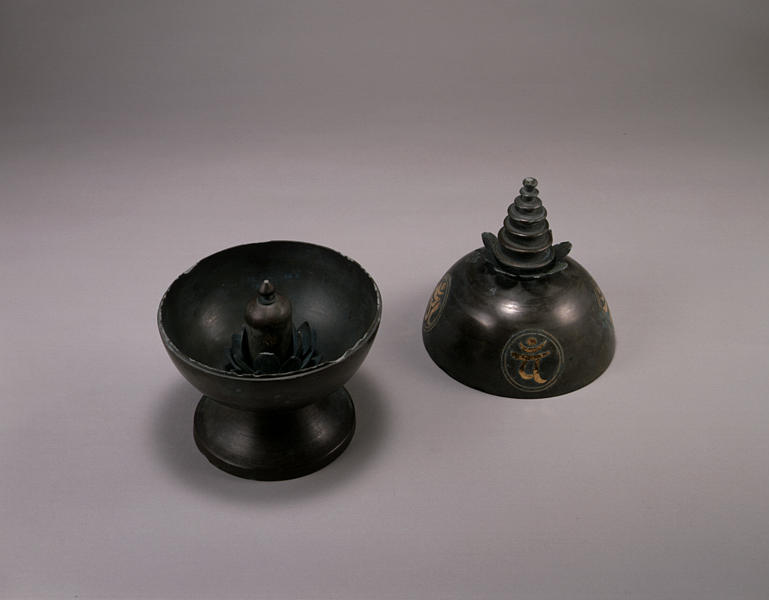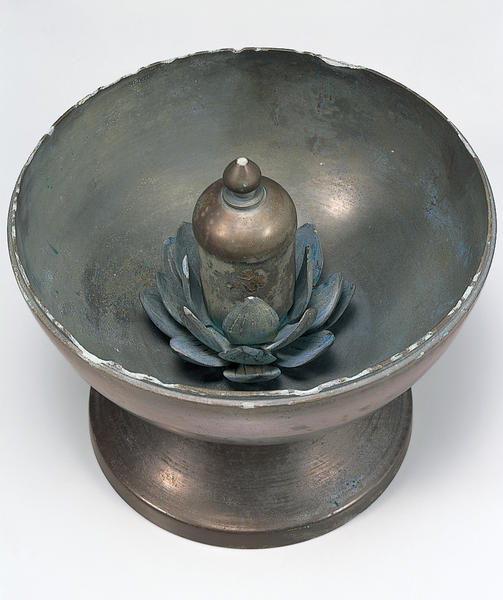Reliquary
- Korea
- Korea, Koryo dynasty
- 14c
- Bronze inlaid with gold and silver
- H-22.6 D-14
Catalogue Entry
The container consists of two parts: a cover topped by a seven-layer parasol on a lotus flower. When this lid is removed, it reveals a lotus flower base on which a small bronze cylindrical reliquary is placed. The reliquary itself has a small button-like protrusion on top.
The lower part of parasol comes through the cover and is attached to it from the interior. The lotus flower base inside consists of five sets of four bronze lotus flower petals, with each side of the petals incised with five lines representing veins. The lifelike lotus petals are placed at the center of the bottom piece and arranged like fish scales. In the center of the flower, designs representing lotus seeds are hammered out on the outer surface of the cylindrical stem of the flower and this stem goes though the bottom and is fixed at the bottom of the base. The present reliquary has been carefully made overall, judging from the perfect fit of the lid that slides on tightly onto the recessed seat of the reliquary reminiscent of the fitting on an inro as well as the markings resulting from smoothing the interior of the small container by means of a lathe.
On each of the four sides of the cover, a Sanskrit letter enclosed in double circles is produced in gold inlay. The reliquary inside has the same four Sanskrit letters in gold inlay. These letters perhaps refer to the Four Great Buddhas including Dainichi Nyorai (s: Vairocana) of the Diamond World (s: Vajradhatu) in Esoteric Buddhism, but the source of this symbolism is uncertain. They can be dated in the late Koryo period, considering the fact that the Sanskrit characters deviate considerably from their standard shapes, despite the high quality of the bronze and fine work.
The shape seen in this reliquary has been used from ancient times. In Japan, it corresponds to a censer that a monk depicted on a side panel of the Tamamushi Shrine in Horyuji Temple holds in his hand. This shape is based on the construction of the stupa, a reliquary for the remains of the Buddha. The design of this reliquary, in which the parasol symbolizes what shaded noblemen from the sun in India and the lotus flower serves as the base for a reliquary, is not only appropriate, but its overall shape is quite common for reliquaries, as documented by a number of specimens.




